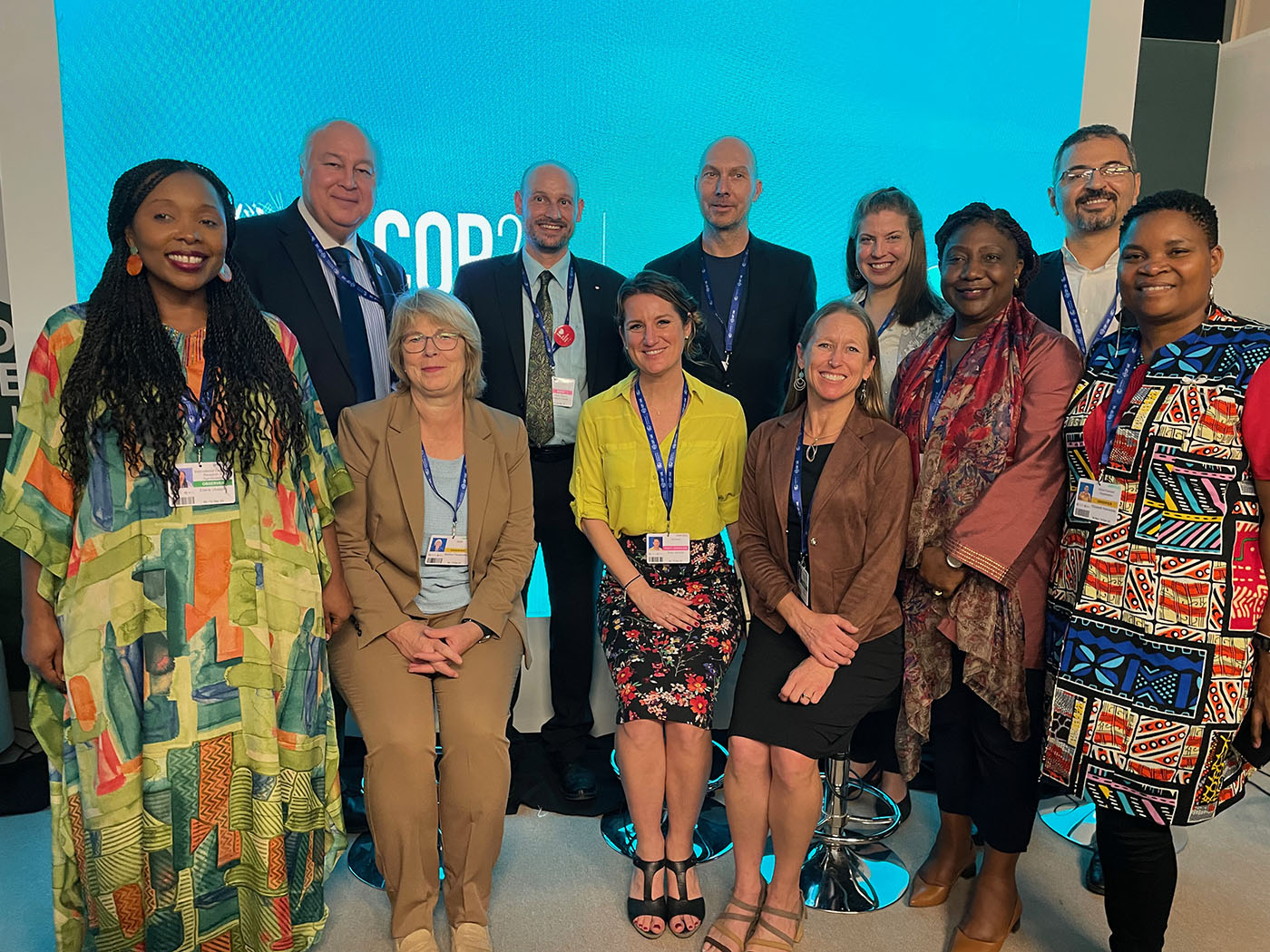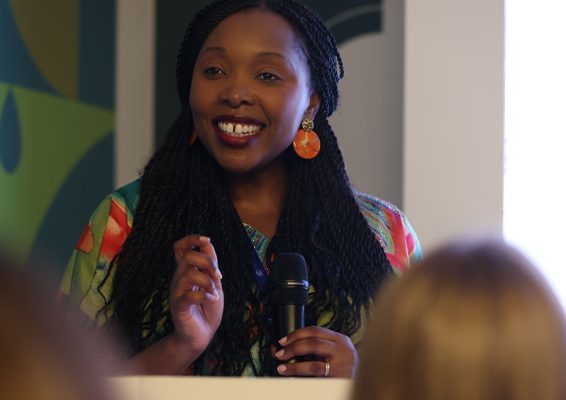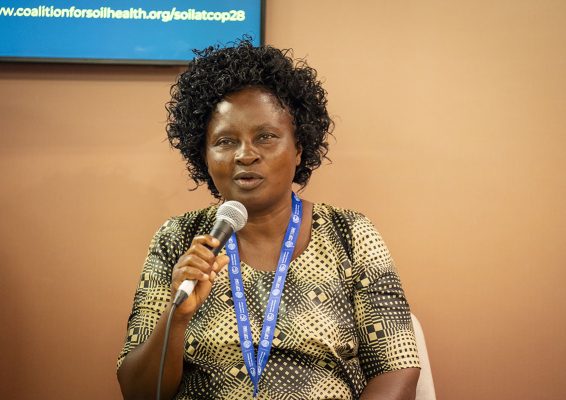On World Soil Day, experts and civil society representatives at the UN Climate Summit urged world leaders to recognize the role of healthy soils in achieving the Paris Agreement, calling for these long overlooked ecosystems to feature in COP28 declarations and in plans for more sustainable food systems.
Representatives from the scientific, finance, policy, corporate and grassroot sectors made the case for sustainable land management at an event organized on the sidelines of COP28 by the Center for International Forestry Research and World Agroforestry (CIFOR-ICRAF), which co-leads the Coalition of Action for Soil Health (CA4SH).
The event came as soils are coming to the fore in climate discussions, as shown by the UAE Declaration on Sustainable Agriculture, Resilient Food Systems and Climate Action backed over 150 countries, and a call to action from more than 100 non-state actors. Both moves build on the Soil Health Resolution CA4SH launched at COP27.
“Healthy soils are the very foundation of our food systems and provide vital ecosystem services,” said CIFOR-ICRAF CEO Éliane Ubalijoro before a packed room. “They sequester carbon, regulate water and nutrient cycling and host biodiversity. Soils are the skin of the Earth, but we do not treat it nearly as well as we should.”
Soils store three times more carbon than the atmosphere, and they can host more biodiversity in one teaspoon than there are humans on Earth, said Leigh Winowiecki, the global research lead for Soil and Land Health at CIFOR-ICRAF. The scientist noted the urgent need to include soils in the climate agenda on account of their huge contribution to adaptation and mitigation.
However, at least one third of the land surface is degraded, meaning that soils are losing their ability to sustain plant growth, biodiversity and environmental services due to unsustainable land use—mainly, poor agricultural practices— and climate change.
Healthy soils for people, climate and nature
Speakers highlighted that healthy soils are essential to achieve global climate, biodiversity and land degradation neutrality goals, and pointed out the need to bridge the gaps between the three Rio Conventions on the policy, finance and implementation fronts.
“We want to see a stronger focus on soil across all of these frameworks, and it is also really important that COP28 takes food and agriculture into account in the global stocktake [of progress towards meeting the goals of the Paris Agreement],” said Global Food Policy at WWF International Martina Fleckenstein, who called for policy coherence.
The lack of policy coherence reflects on international funding flows, according to Nikita Eriksen-Hamel, expert with Canada’s Food System Division of Global Affairs. In other words, a project that improves agricultural practices and soil health is unlikely to obtain funding earmarked for ‘climate’ or ‘biodiversity,’ although it directly contributes to both.
Current food systems are a major part of the climate, biodiversity and land problem: they take up 40 percent of the Earth’s land area and account for 80 percent of deforestation and 70 percent of freshwater use. But agriculture, speakers argued, can and must also be part of the solution.
“Business as usual is not possible anymore,” said Executive Secretary of the ‘4 per 1000 Initiative: soil for food security and climate’, Paul Luu. “We know perfectly well that food systems and soils are essential to meet the goals of the Paris Agreement.”
To realize that potential, he said, countries must enact policies to incentivize agroecological practices, combining the latest evidence with tried-and-tested traditional knowledge, and put in place adequate monitoring mechanisms to keep track of progress and make the necessary adjustments.

Speakers at the soil health event at COP28. Photo by James Baker
In addition, efforts to restore soils to health must include all age groups and all actors from farm to table. Especially smallholder farmers, who produce one third of the world’s food, as noted by president of the Eastern Africa Farmers Federation Elizabeth Nsimbanda and director of Young Professionals for Agricultural Development Genna Tesdall.
Private sector contributions
As representatives of the private sector, a soil carbon platform, a bank and a company specialized in nutrients and technologies for food production discussed innovative business and finance models to support a transition towards more sustainable, resilient agricultural landscapes.
In Africa, Moroccan-based company OCP has supported two million smallholders in customizing their fertilizer use, and are also developing solutions for carbon farming practices—agricultural practices that sequester carbon or reduce greenhouse gas emissions.
In turn, European soil carbon platform Agreena is connecting farmers to the voluntary carbon market to financially incentivize their transition to regenerative agriculture and scale carbon removals.
“Finance is very important, but so is capacity building,” said Sustainability Affairs officer at Agreena Erica Jonhston: “Regenerative agriculture is a whole new way of farming for many people around the world, so we need to provide a knowledge base.”
Finally, Rabobank is financing ventures that are also profitable for farmers and beneficial to soils.
“Strangely, in the banking world, the farmers who have more sustainable practices are considered more risky, because bankers do not take into account soil degradation,” said the Rabobank head of Innovation and CEO or Rabo Caron Bank Roland Van der Vorst. “Instead, we incentivize them to improve soil health.”
So they are financing large-scale agroforestry schemes in regions like Asia and Latin America, and looking to launch a USD200 million fund within the next 12 months to prefinance seedlings for agroforestry in smallholder farms. In that case, the idea is that farmers shall receive financing to plant the trees; then use the money from carbon credits to repay the loan and, eventually, make a profit.
Seizing the momentum
In the past 15 years, African countries have become more aware of the urgency of addressing land degradation, and embraced the fact that soil health and the region’s productivity gap will not be fixed with fertilizers alone. The momentum shall further build as the African Union (AU) is organizing a major fertilizer and soil health summit in 2024.
“The heightened political attention on healthy soils as the foundation of resilient food systems is an opportunity,” said Estherine Fotabong, director of Food Security and Environmental Sustainability at the AU Development Agency. “An opportunity to drive the policies, practices and investments we need to rebuild our soils.”
Ubalijoro encouraged all institutions and sectors concerned about soil to make the most of the knowledge generated by CIFOR-ICRAF over decades: “Our work provides solid, actionable research on soil and land health through a state of the art Soil Spectroscopy Lab and an extensive database of soil and land health indicators. So please, come to us if you’re working in this space.”
CIFOR-ICRAF and CA4SH hosted two additional sessions on the topic at COP28: one on soil health monitoring and another one on strengthening national climate goals for soil health.
Coming up in 2024
The Coalition will engage at the upcoming UNEA-6 to ensure healthy soil is included in the discussions around land, nature based solutions and food systems, including in the proposed Resolutions. Between March and April 2024, CA4SH will host a monthly webinar session on pathways for integrating science, policy and practice to propel the urgent soil health agenda.
The first online event will explore how to create an enabling policy environment for soil health with a view to translating high-level commitments into concrete mechanisms and actions. Other sessions will address the need to support farmers’ investments in soil carbon stocks through regenerative agricultural practices; and harness technologies to monitor the physical, chemical and biological aspects of soil health at scale.
At the centennial celebration and congress of the International Union of Soil Science (IUSS), taking place from 19 to 21 May in Italy, CA4SH will host additional sessions about advances in soil health monitoring, and highlight opportunities to include soil health in policies and strategies like national climate plans and actions taken in the frame of the Rio Conventions.
We want you to share Forests News content, which is licensed under Creative Commons Attribution-NonCommercial-ShareAlike 4.0 International (CC BY-NC-SA 4.0). This means you are free to redistribute our material for non-commercial purposes. All we ask is that you give Forests News appropriate credit and link to the original Forests News content, indicate if changes were made, and distribute your contributions under the same Creative Commons license. You must notify Forests News if you repost, reprint or reuse our materials by contacting forestsnews@cifor-icraf.org.


